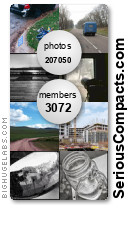Not long ago, I speculated that Panasonic may have been pushing Adobe to incorporate mandatory lens correction for LX3 barrel distortion into Adobe Camera Raw/Lightroom. This turns out to have been the case, as evidenced by Eric Chan's remarks on the second page of replies to a recent post on The Online Photographer:
Panasonic asked Adobe to implement their desired level of lens compensations. We agreed, but it took some time to do so (that's why we had to wait till Camera Raw 5.2 and Lightroom 2.2, instead of CR 5.1 and LR 2.1). We also have a good relationship with Panasonic that continues through today.
In general, if photographers are upset that they are not given an option to turn off lens compensations, they should make a request to Panasonic, not Adobe.
Eric Chan
p.s. I am an engineer on the Camera Raw team at Adobe.
It turns out that Adobe has incorporated mandatory lens corrections for both the LX3 and the G1 in Adobe Camera Raw, Lightroom, and the Adobe DNG converter. By mandatory corrections, I am referring to corrections that are applied automatically and cannot be disabled.
According to Brian Griffith of Iridient Digital (personal communication), an LX3 or G1 RAW file which has been converted to DNG using Adobe's DNG converter will have these corrections applied in such a manner that the corrections cannot be reversed when subsequently processing the DNG in Iridient Digital's Raw Developer. I assume that the same will be true for other RAW processing applications - ie, once the corrections have been "baked" into DNG, they are irreversible. Of note, one can open both the original RAW files and the DNG conversions in RAW Developer to compare the effects of the corrections.
I shoot RAW because I want to keep all my options. Leaving barrel distortion uncorrected gives me a significantly wider angle of view (correcting it chops out a significant portion of the image) and also allows me to use the barrel distortion and light falloff as an artistic decision. If the Adobe DNG Converter removes these options, then I consider it to be an unsuitable tool for generating an archival format for my RAW files. While I understand Eric Chan's suggestion that the directive comes from Panasonic, not Adobe, I think that Adobe ought to maintain full transparency about DNG. What other adjustments are being incorporated when we convert to DNG?

